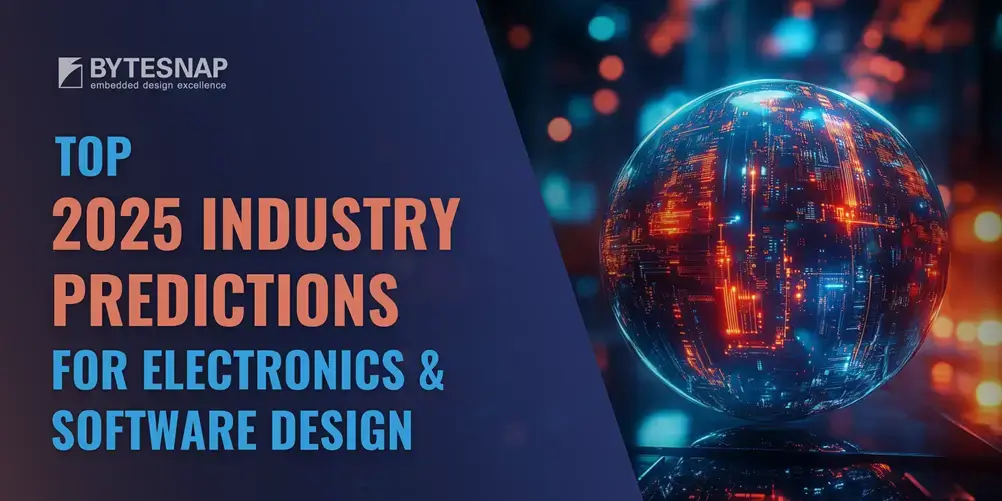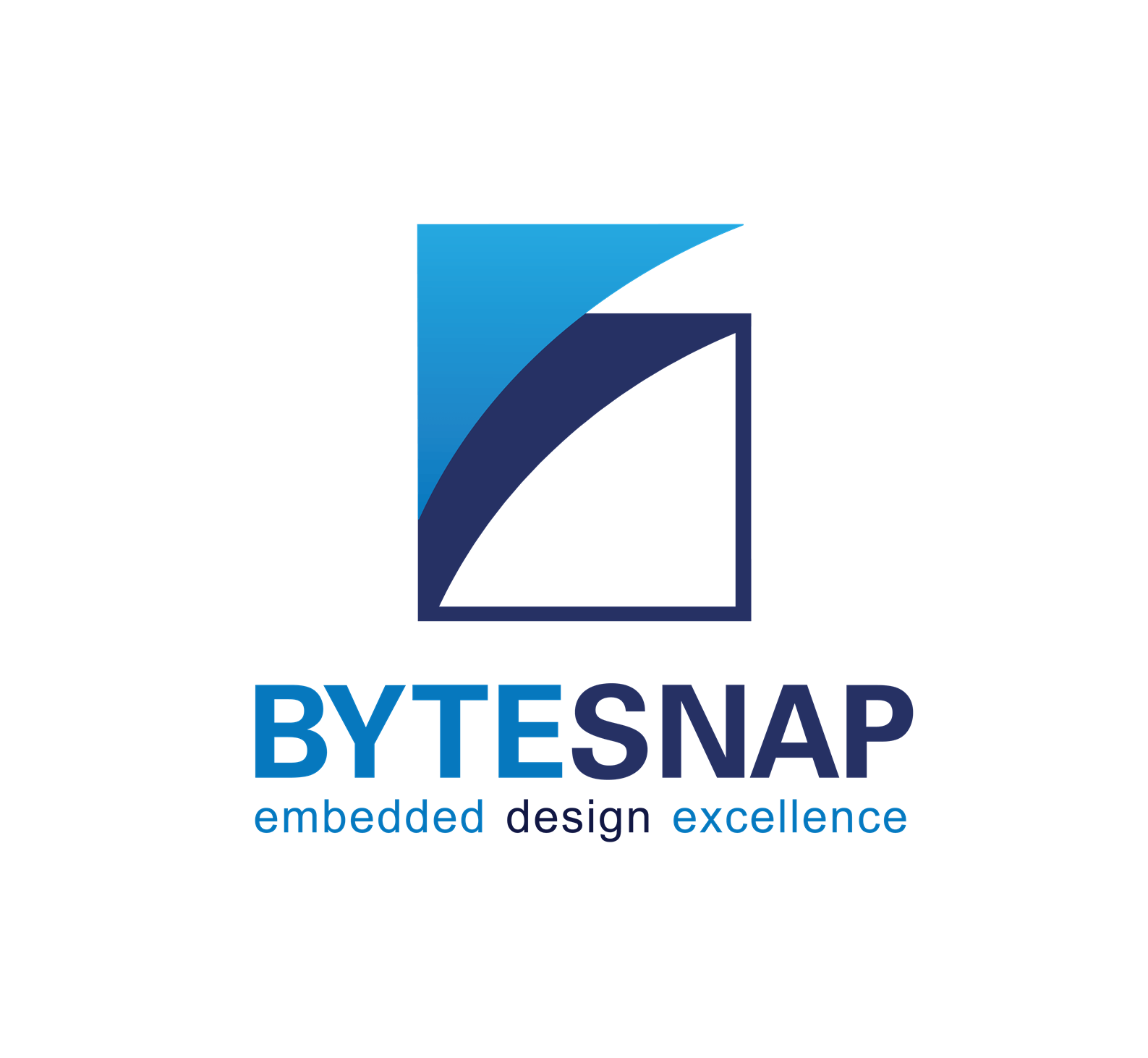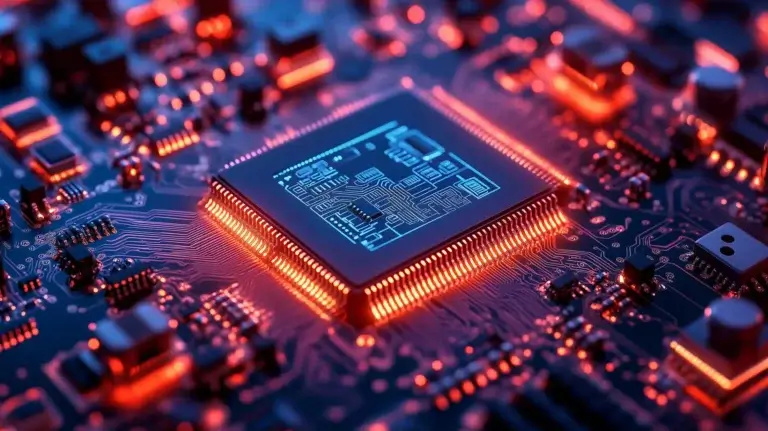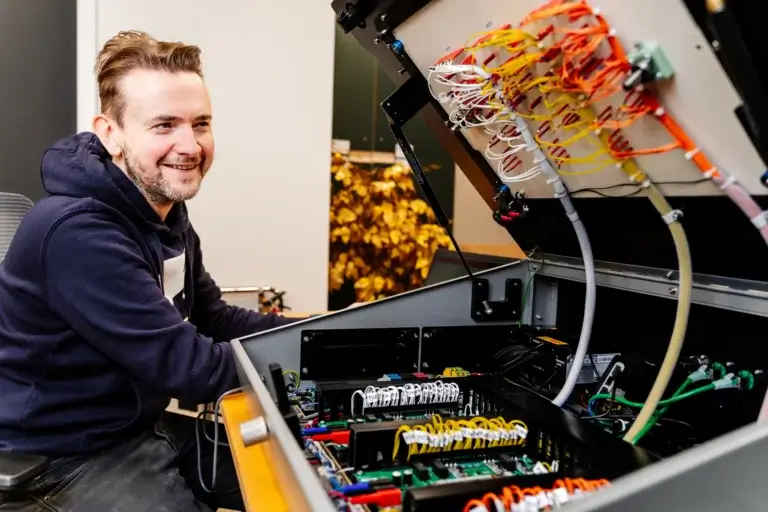2025 Industry Predictions for Electronic Design and Software Development
Welcome to 2025!
The electronics and software design industry has hit the ground running this year, with transformative changes already in full swing. At ByteSnap Design, we’re not just observing these shifts – we’re at the forefront, helping our clients adapt and thrive in this new landscape.
In this post, we share our top 2025 industry predictions for electronics and software design.
Let’s explore what the future holds and how you can prepare for the exciting changes ahead.

1. Bluetooth 6.0: A Game-Changer in Connectivity
The first major shift we anticipate is the widespread adoption of Bluetooth 6.0 features – set to revolutionise how devices connect and interact and open up new possibilities across various industries.
Channel Sounding and Precision Location Tracking
One of the most exciting features of Bluetooth 6.0 is channel sounding, which enables astonishingly accurate distance measurement between devices. We’re talking about precision up to 1 cm within a 150 m range.
This level of accuracy is set to transform several key areas:
- Warehouse Management: Imagine the efficiency gains for companies like Amazon, who could pinpoint the exact location of items in their vast distribution centres. This could dramatically reduce errors and streamline operations.
- Personal Item Tracking: Say goodbye to those frustrating searches for your keys or wallet. With Bluetooth 6.0, locating personal items will become more precise than ever.
- Enhanced Security for Smart Locks: Manufacturers like Yale and August are likely to leverage this technology to create more secure smart locks. By ensuring that locks only open when an authorised device is detected within a specific, close range, we’ll see a significant reduction in relay attacks.

Improved Wireless Communications
Bluetooth 6.0 is bringing more to the table with features like decision-based filtering and flexible packet transmission timing.
These advances are set to boost the performance and reliability of wireless communications across the board.
What does this mean for you?
More robust, efficient, and secure connections for a wider range of applications.
As we move through 2025, we expect to see these Bluetooth 6.0 features becoming increasingly prevalent in consumer and industrial products alike. For businesses in the IoT space, this presents an opportunity to develop more sophisticated and reliable connected devices.
For end-users, it promises a future of seamless, secure, and precise connectivity.
2. Cybersecurity: A New Era of Secure Design
The second of our 2025 industry predictions sees a seismic shift in the cybersecurity landscape, with ‘Secure by Design’ principles set to become the industry standard.
This necessity is being driven by the increasing sophistication of cyber threats, and the potential for major security breaches to make headlines.
Regulatory Landscape
The UK is poised to lead a global push for enhanced security measures, with the US and Europe following closely behind.
We’re seeing this play out in real-time with new regulations like:
- The EU Cyber Resilience Act, mandating robust security standards for all digital products
- US Executive Order 14028, requiring federal agencies and contractors to strengthen their cybersecurity measures
These regulations are set to reshape our industry, driving a global focus on cybersecurity for connected devices.
Impact on Product Design and Development
This shift towards ‘Secure by Design’ will have far-reaching consequences:
- Sales of insecure devices are likely to plummet
- We’ll see widespread redesigns across various sectors
- Design teams will need to adopt pre-emptive strategies for product assessment and upgrades
For many companies, this will mean prioritising security assessments of their entire product lines. Older, more vulnerable devices may face quicker obsolescence.
Impact on Product Design and Development
If you’re in product development or management, now is the time to start thinking about how you can integrate security into every stage of your design process.
This now goes beyond compliance and focuses even more on building trust with your customers and protecting your reputation.
At ByteSnap, we’re already working with clients to implement these ‘Secure by Design’ principles. We’re seeing firsthand how this proactive approach to security can lead to more robust, reliable products that stand out in an increasingly security-conscious market.
In this new era of cybersecurity, remember: security isn’t just an add-on feature anymore. It’s becoming the foundation of good design.
3. Semiconductor Industry: A Tale of Two Segments
We’re seeing a fascinating split in the microcontroller market which will become more pronounced during 2025.
A full-blown segmentation that’s set to reshape how we approach device design and manufacturing.
Security-First Microcontrollers
On one side, we’ve got microcontrollers that are beefing up their security game.
These aren’t your run-of-the-mill chips; they’re packing advanced security features specifically designed for internet-connected applications.
If you’re working on IoT devices, smart home tech, or anything where data security is paramount, these are the chips you’ll want to keep an eye on.
Back-to-Basics Microcontrollers
However, we’re also seeing a market for simpler, more cost-effective microcontrollers.
These chips are stripping away the complex security features, making them ideal for offline applications or devices that only indirectly connect to the internet.
Think basic consumer electronics or traditional appliances that don’t need to worry about complex network interactions.

Industry Alliance on the Horizon
Here’s where it gets really interesting…
We predict that major chip manufacturers might band together to form an industry alliance.
Their goal? To establish unified security standards across the board.
This could be a game-changer, creating adaptable security frameworks that work across various devices.
For you, this means a few things:
- More options when choosing microcontrollers for your projects
- Potentially lower costs for devices that don’t need high-level security
- A more standardised approach to security in internet-connected devices
It’s an exciting time in the semiconductor world, and these changes could open up new possibilities for innovation in product design.
4. Development Tools: The Rise of Visual Studio Code
The next of our 2025 industry predictions – a significant change in the development environment. This is being driven by the increasing popularity of Visual Studio Code (VS Code) among developers.

Silicon Labs Leading the Charge
Look out for more silicon vendors, with Silicon Labs at the forefront, adopting VS Code as their primary integrated development environment (IDE) during 2025.
This move away from proprietary IDEs like Simplicity Studio signals a broader industry trend towards more flexible, universally accepted platforms.
Why VS Code?
There are several reasons why VS Code is gaining traction:
- Flexibility: Its extensive plugin ecosystem allows developers to customise their workspace to suit their specific needs.
- Cross-platform compatibility: VS Code works seamlessly across different operating systems, making it ideal for diverse development teams.
- Language support: With its ability to support multiple programming languages, VS Code is a versatile tool for both software and hardware development.
Impact on the Industry
This change towards VS Code could have far-reaching effects:
- Improved accessibility: The adoption of a widely-used, open-source IDE could lower the barrier to entry for embedded systems development.
- Increased innovation: As more developers use a common platform, we might see a surge in community-driven tools and extensions specifically for embedded development.
- Standardisation: This move could set new industry standards, potentially improving collaboration and code sharing across the sector.
For you, as a developer or project manager in the embedded systems space, this trend means it might be time to consider familiarising yourself with VS Code if you haven’t already.
It could soon become the de facto standard in our industry, and staying ahead of the curve could give you a significant advantage.

5. Emerging Technologies: AI’s Impact on Embedded Electronics
We predict a surge of AI applications specifically designed to enhance and streamline various aspects of embedded systems development.
AI-Enhanced Development Processes
AI is set to revolutionise how we approach embedded systems development.
Expect to see:
- Intelligent code generation tools that can significantly speed up the development process
- AI-powered debugging assistants that can identify and suggest fixes for complex issues
- Automated testing frameworks that can generate comprehensive test cases based on system specifications
All this could dramatically reduce development time and improve code quality, allowing engineers to focus on more complex, value-added tasks.
Enhanced Security Measures
With the increasing importance of cybersecurity, AI is poised to play a crucial role in protecting embedded systems:
- AI-driven threat detection systems that can identify and respond to potential security breaches in real-time
- Machine learning algorithms capable of analysing system behaviour to detect anomalies and potential vulnerabilities
- Automated security testing tools that can simulate a wide range of attack scenarios
These AI-powered security measures will be essential in safeguarding the sensitive data often handled by embedded systems.
Blockchain Integration
While not directly related to embedded systems, look out for more integration between AI, blockchain technologies, and embedded systems.
This convergence could facilitate:
- Secure and transparent inter-device communications within IoT networks
- Improved traceability and accountability in supply chain management for embedded components
- Enhanced data integrity and authenticity verification in critical embedded systems
As we move into 2025, it’s clear that AI will play an increasingly important role in shaping the future of embedded electronics.
For companies in this space, staying ahead of these AI trends will be key to maintaining a competitive edge and delivering innovative solutions to market.
Here’s to a year of groundbreaking progress and success in electronics and software product design industry!

Founded in 2008, ByteSnap Design is an award-winning embedded systems design consultancy, offering a comprehensive range of services across the electronic product development lifecycle.
A highly skilled team of over 40 hardware and software engineers, our expertise spans several sectors, including IoT, automotive, industrial, medical, and consumer electronics.
The engineering consultants on the ByteSnap Editorial Team share their knowledge and practical tips to help you streamline your product development and accelerate designs to market successfully.
With their deep technical expertise and practical experience, they aim to provide valuable insights and actionable tips to guide you through the complex world of electronic product design and development, to help you bring innovative, reliable, and secure electronic products to market quickly and cost-effectively.




